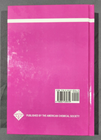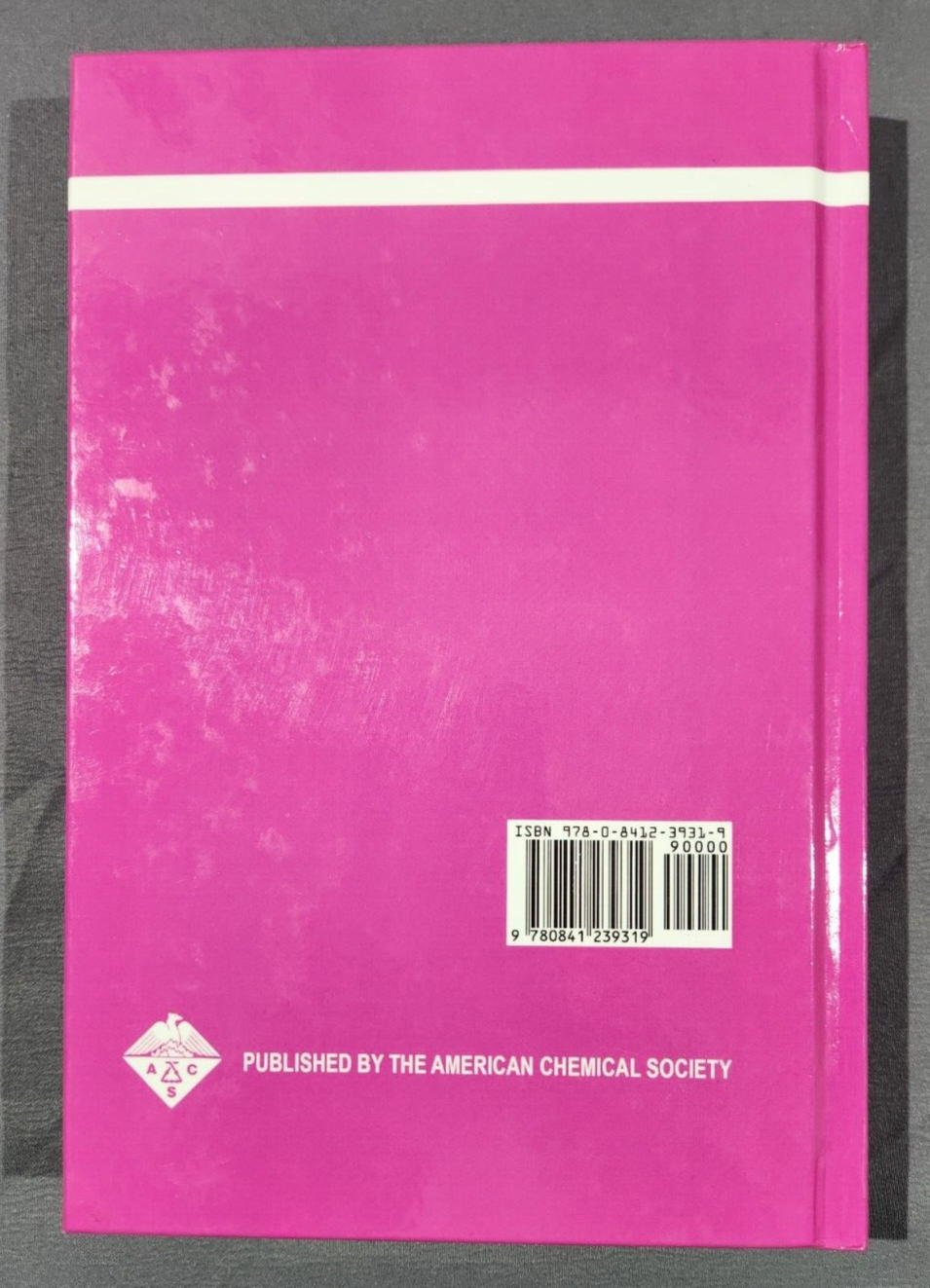Bild 1 von 7







Galerie
Bild 1 von 7







Ähnlichen Artikel verkaufen?
Acs Symposium Ser.: Trennungen für den Kernbrennstoff
US $99,99
Ca.CHF 79,24
oder Preisvorschlag
Artikelzustand:
Sehr gut
Buch, das nicht neu aussieht und gelesen wurde, sich aber in einem hervorragenden Zustand befindet. Der Einband weist keine offensichtlichen Beschädigungen auf. Bei gebundenen Büchern ist der Schutzumschlag vorhanden (sofern zutreffend). Alle Seiten sind vollständig vorhanden, es gibt keine zerknitterten oder eingerissenen Seiten und im Text oder im Randbereich wurden keine Unterstreichungen, Markierungen oder Notizen vorgenommen. Der Inneneinband kann minimale Gebrauchsspuren aufweisen. Minimale Gebrauchsspuren. Genauere Einzelheiten sowie eine Beschreibung eventueller Mängel entnehmen Sie bitte dem Angebot des Verkäufers.
Oops! Looks like we're having trouble connecting to our server.
Refresh your browser window to try again.
Versand:
Kostenlos USPS Priority Mail Medium Flat Rate Box®.
Standort: Ponca City, Oklahoma, USA
Lieferung:
Lieferung zwischen Do, 23. Okt und Mo, 27. Okt nach 94104 bei heutigem Zahlungseingang
Rücknahme:
30 Tage Rückgabe. Käufer zahlt Rückversand. Wenn Sie ein eBay-Versandetikett verwenden, werden die Kosten dafür von Ihrer Rückerstattung abgezogen.
Zahlungen:
Sicher einkaufen
Der Verkäufer ist für dieses Angebot verantwortlich.
eBay-Artikelnr.:276816636446
Artikelmerkmale
- Artikelzustand
- ISBN
- 9780841239319
Über dieses Produkt
Product Identifiers
Publisher
American Chemical Society
ISBN-10
0841239312
ISBN-13
9780841239319
eBay Product ID (ePID)
51583177
Product Key Features
Number of Pages
360 Pages
Language
English
Publication Name
Separations for the Nuclear Fuel Cycle in the 21st Century
Publication Year
2006
Subject
Power Resources / Nuclear, General
Type
Textbook
Subject Area
Technology & Engineering
Series
Acs Symposium Ser.
Format
Hardcover
Dimensions
Item Height
0.9 in
Item Weight
19.4 Oz
Item Length
6.2 in
Item Width
9.1 in
Additional Product Features
Intended Audience
College Audience
LCCN
2005-057229
Dewey Edition
22
Series Volume Number
No. 933
Illustrated
Yes
Dewey Decimal
621.48/335
Table Of Content
Current Trends and Direction to the Future1: Kenneth L. Nash, Gregg J. Lumetta, Sue B. Clark, Judah Friese: Significance of the Nuclear Fuel Cycle in the 21st Century2: Kenneth L. Nash: Twenty-first Century Approaches to Actinide Partitioning3: T. A. Todd and R. A. Wigeland: Advanced Separation Technologies for Processing Spent Nuclear Fuel and the Potential Benefits to a Geologic Repository4: Chien M. Wai: Reprocessing Spent Nuclear Fuel with Supercritical Carbon DioxideAqueous Processing5: Allen J. Bakel, Delbert L. Bowers, Kevin J. Quigley, Monica C. Regalbuto, John A. Stillman, and George F. Vandegrift: Dissolution of Irradiated Nuclear Fuel from the Big Rock Point Reactor6: O. D. Fox, C. J. Jones, J. E. Birkett, M. J. Carrott, G. Crooks, C. J. Maher, C. V. Roube, R. J. Taylor: Advanced PUREX Flowsheets for Future Np and Pu Fuel Cycle Cemands7: Stuart T. Arm1 and Jon A. Jenkins: Haze Formation and Behavior in Liquid-Liquid Extraction Processes8: J. Plaue, S. Goeury, J. Petchsaiprasert, M. Draye, J. Foos, and K. Czerwinski: Comparison of Uranyl Third Phase Formation in 30% TBP/Nitric Acid in Dodecane and HPT Using UV-Visible Spectroscopy9: R. Chiarizia, M. P. Jensen, M. Borkowski, and K. L. Nash: A New Interpretation of Third Phase Formation in the Solvent Extraction of Actinides by TBP10: Mark D. Ogden, Jun Jiang, Iain May, Mark J. Sarsfield, and Phil Mayhew: The Interaction of Ammonium Carbamate with Uranyl and Molybdenum Containing Species Derived from PUREX Processing11: Glenn A. Fugate and James D. Navratil: Plutonium Peroxide12: Don Mullins, Gordon Jarvinen, Michael Mayne, Doris Ford, Kristy Long, Heidi Reichert, Phillip Palmer, C. Drew Tait, D. Webster Keogh, Pamela Gordon: Crystallization of Uranium Complexes for Partitioning of Spent Nuclear FuelEmerging Separations Systems13: Gregg J. Lumetta,, Bruce K. McNamara, Timothy L. Hubler, Dennis W. Wester, Jun Li, and Stan L. Latesky: Potential Application of Kläui Ligands in Actinide Separations14: A.I. Bhatt, H. Kinoshita, A.L. Koster, I. May, C. Sharrad, H.M. Steele, V.A. Volkovich, O.D. Fox, C.J. Jones, B.G. Lewin, J.M. Charnock and C. Hennig: Actinide, Lanthanide and Fission Product Speciation and Electrochemistry in Ionic Melts15: Dominique C. Stepinski, Blake A. Young, Mark P. Jensen, Paul G. Rickert, Julie A. Dzielawa, Andrew A. Dilger, David J. Rausch, and Mark L. Dietz: Application of Ionic Liquids in Actinide and Fission Product Separations: Progress and ProspectsActinide/Lanthanide Separations16: Dean R. Peterman, Jack D. Law, Terry A. Todd, and Richard D. Tillotson: Use of Cyanex-301 for Separation of Am/Cm From Lanthanides in an Advanced Nuclear Fuel Cycle17: T. Matsumura and K. Takeshita: Extraction Separation of Am(III) and Eu(III) with TPEN Isomers and Decanoic AcidSolution-Solid Interactions18: Sarah E. Pepper, Brienne N. Bottenus, Larry C. Hull, Carrie G. Shepler and Sue B. Clark: The Influence of Simple Erganic Ligands on the Partitioning Mechanism of Trivalent Lanthanum to Goethite19: Judah I. Friese, Matthew Douglas, James L. Jerden, Jr.: Neptunium Association with Selected Uranyl Phases Anticipated in the Yucca Mountain Repository20: onald E. Wall, Nathalie A. Wall, and Laurence H. Brush: Speciation and Solubility Modeling of Actinides in the Waste Isolation Pilot Plant
Synopsis
This book constitutes the proceedings from a symposium titled Separations for the Nuclear Fuel Cycle in the 21st Century which was held in March 2004. This symposium focused on assessing the current state-of-the art in nuclear separations science and technology, and on identifying R&D directions required to enable nuclear separations to meet 21st Century demands for waste minimization, environment protection, safety, and security. Several recent developmentshave elevated the importance of this topic including: the potential effects of global warming caused by carbon dioxide emissions from burning of fossil fuels; rising demand for the electric power that isneeded to raise the global standard of living; geopolitical issues such as those related to nuclear proliferation and nuclear terrorism. Although expansion of fission-based nuclear power would help reduce the potential for global warming, future development of the nuclear fuel cycle must be weighed against the issues of proliferation and management of irradiated fuel. Separations will play a central role in addressing these issues. The subject matter of this book is organized into five topicalareas. These are: 1) current trends and direction to the future, 2) aqueous processing, 3) emerging separations systems, 4) actinide/lanthanide separations, and 5) solution-solid interactions. Thiscollection of papers provides a snapshot of the current state of nuclear separations chemistry and can be used to help guide future directions in this critical technological field., This book constitutes the proceedings from a symposium titled Separations for the Nuclear Fuel Cycle in the 21st Century which was held in March 2004. This symposium focused on assessing the current state-of-the art in nuclear separations science and technology, and on identifying R&D directions required to enable nuclear separations to meet 21st Century demands for waste minimization, environment protection, safety, and security. Several recent developments have elevated the importance of this topic including: the potential effects of global warming caused by carbon dioxide emissions from burning of fossil fuels; rising demand for the electric power that is needed to raise the global standard of living; geopolitical issues such as those related to nuclear proliferation and nuclear terrorism. Although expansion of fission-based nuclear power would help reduce the potential for global warming, future development of the nuclear fuel cycle must be weighed against the issues of proliferation and management of irradiated fuel. Separations will play a central role in addressing these issues. The subject matter of this book is organized into five topical areas. These are: 1) current trends and direction to the future, 2) aqueous processing, 3) emerging separations systems, 4) actinide/lanthanide separations, and 5) solution-solid interactions. This collection of papers provides a snapshot of the current state of nuclear separations chemistry and can be used to help guide future directions in this critical technological field., This book focuses on assessing the current state-of-the art in nuclear separations science and technology, and on identifying R&D directions required to enable nuclear separations to meet 21st Century demands for waste minimization, environment protection, safety, and security.
LC Classification Number
TK9360.S435 2006
Artikelbeschreibung des Verkäufers
Info zu diesem Verkäufer
IV Scientific
100% positive Bewertungen•1.1 Tsd. Artikel verkauft
Angemeldet als gewerblicher Verkäufer
Verkäuferbewertungen (144)
- t***s (11)- Bewertung vom Käufer.Letztes JahrBestätigter KaufItem arrived in good condition as advertised.Basic Health Physics by Bevelacqua, Joseph John (Nr. 276696336694)
- h***9 (10)- Bewertung vom Käufer.Vor über einem JahrBestätigter KaufItem was received just as advertised.TSI VelociCheck Model 8330 Air Velocity Model, Tested (Nr. 274391759406)
- 0***m (126)- Bewertung vom Käufer.Vor über einem JahrBestätigter KaufCame with certificate and was as described.NIST Standard Reference Material 629 Zinc-Based E Die Cast Alloy (Nr. 274819561693)

